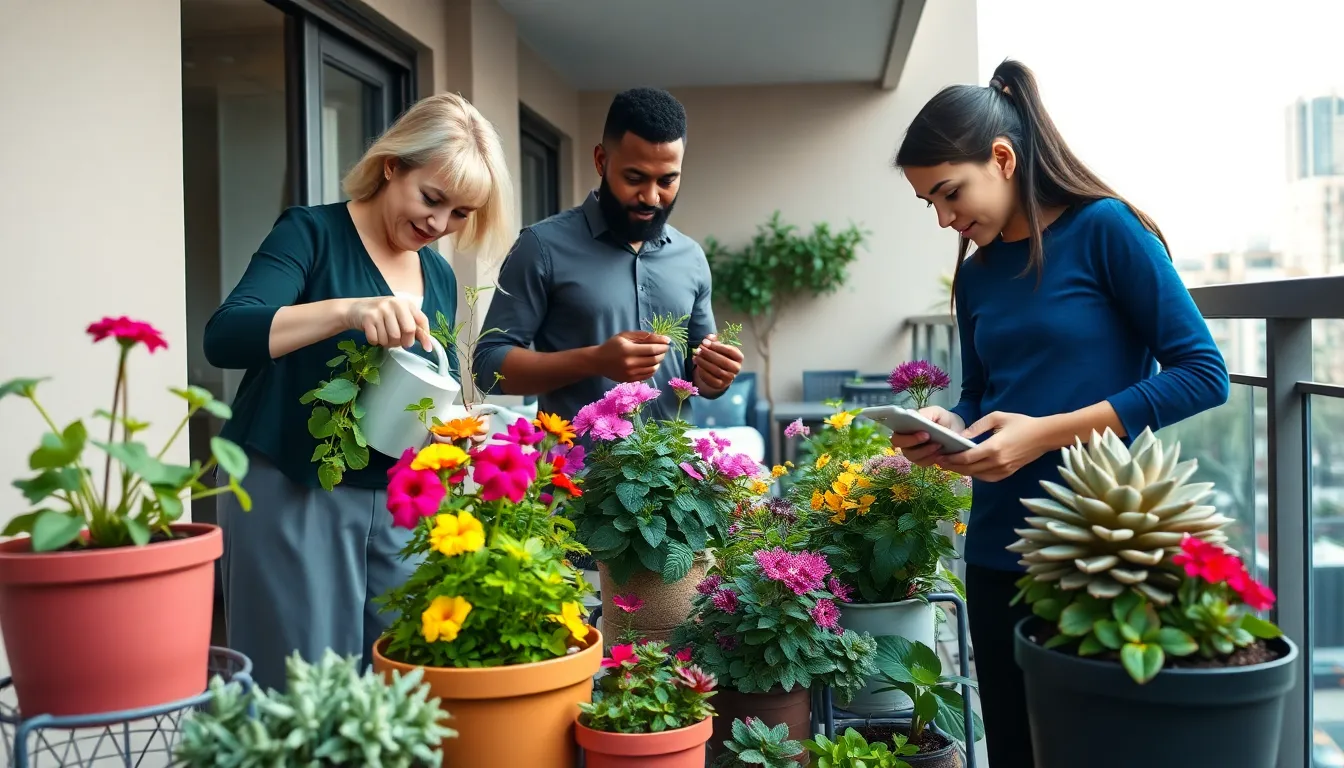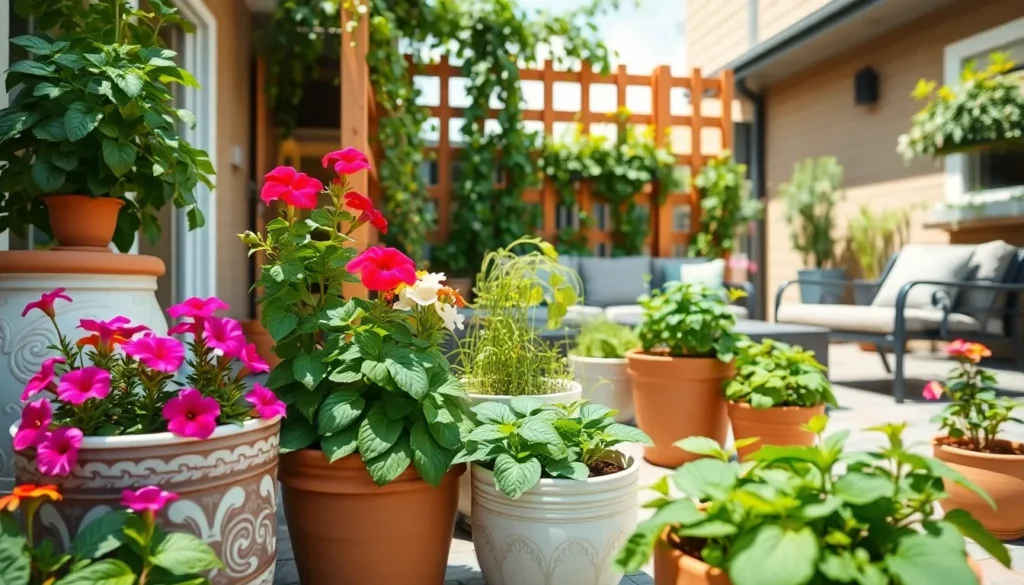Imagine stepping out onto your patio in the morning and being greeted by a vibrant display of flowers and fresh vegetables, all flourishing in nifty little pots. Sounds like a dream, right? Welcome to the world of outdoor container gardening. Not only does it allow you to dabble in horticulture without needing a grand backyard, but it also brings a touch of nature right to your doorstep. In this guide, we’ll jump into the ins and outs of container gardening, revealing tips, tricks, and plenty of inspiration to get your green thumb itching. Let’s turn your outdoor space into a flourishing oasis.
Outdoor Container Gardening

Outdoor container gardening offers a cornucopia of benefits that can entice even the most hesitant gardener. One major advantage is versatility: it allows individuals to grow plants in spaces where traditional gardens can’t thrive. Got a small balcony, a concrete patio, or even a few steps leading to your front door? Perfect. Containers are a clever solution for maximizing limited space.
Also, container gardens are incredibly portable. Imagine changing your garden’s location with just a gentle tug. You can follow the sun, escape harsh weather, or simply rearrange your flowers for aesthetic flair. As the seasons change, so can your garden.
Let’s not forget the ease of maintenance. Container gardening simplifies weeding since the plants are contained, and soil quality often improves due to the focused care you can provide. Plus, it’s easier to keep pests at bay when they’re confined to pots. In essence, outdoor container gardening is not just a practical approach but also a delightful hobby that promises rewards with relatively little effort.
Choosing the Right Containers
When it comes to outdoor container gardening, the choice of containers is crucial. First and foremost, material matters. Clay pots are popular for their classic look but may require more frequent watering due to their porous nature. On the other hand, plastic containers are lightweight and moisture-retaining, perfect for busy gardeners. Don’t be afraid to explore decorative ceramic, metal, or even repurposed items like old buckets.
Next, size truly does matter. A larger container can accommodate deeper roots and maintain moisture better, which is essential for plant health. But, overestimating can lead to unnecessary weight. Consider your physical capacity and location before making a choice.
Finally, drainage holes are non-negotiable. They can prevent waterlogged roots, which can kill your precious plants. If you find the perfect pot without holes, simply create some. Your plants will thank you.
Selecting Suitable Plants for Containers
Now, selecting the right plants for your containers is where the fun really begins. Understanding the climate and sunlight your space receives is vital. Some plants bask in full sun. Others prefer the cozy shade. Grouping plants based on their light requirements can create a harmonious container garden.
Herbs are a fantastic choice for beginners. They’re often forgiving and can thrive even in less-than-ideal conditions. Think basil, mint, and parsley, delicious and easy to care for. Flowering plants like petunias or geraniums add vibrant colors, and vegetables like cherry tomatoes thrive splendidly in containers.
Consider incorporating some trailing plants to add visual interest. Plants like ivy or sweet potato vine can cascade over the sides of your pots, creating a stunning effect. A mixture of heights and colors will keep your outdoor space lively and inviting.
Soil and Drainage Considerations
Soil choice is another crucial element in outdoor container gardening. Standard garden soil simply won’t cut it: it tends to become compacted in containers, restricting root growth and water drainage. Instead, opt for a quality potting mix specifically designed for container gardening. These mixes often include materials that enhance aeration and drainage, like perlite or vermiculite.
Drainage is a key consideration. Without proper drainage, you risk stunting your plant’s growth or, worse, killing them with kindness. If your chosen container lacks drainage holes, consider adding a layer of gravel or stones at the bottom to help water flow. It’s a simple step that can make a world of difference.
Maintaining healthy soil is vital: consider doing periodic soil tests if you notice stunted growth or yellowing leaves. Amending with compost or a balanced fertilizer can rejuvenate your plants and keep them thriving.
Watering and Maintenance Tips
Watering is often the most challenging aspect of container gardening. The key is finding the balance: too little water can lead to wilting, while too much can drown the roots. A good rule of thumb is to check the top inch of the soil. If it’s dry, it’s time to water. Morning is the best time to water, allowing plants to absorb moisture before the heat of the day kicks in.
A well-designed watering can help distribute water evenly and minimize runoff. If the containers are large, using a soaker hose or drip irrigation system can make life simpler. These systems provide a slow, steady flow of water at the roots where it’s needed most.
Don’t forget about fertilizing. Depending on the types of plants you choose, you might need to provide nutrients every few weeks. Liquid fertilizers or slow-release pellets can significantly improve plant health and productivity. Keeping an eye out for pests and diseases is also important. Inspect your plants regularly and intervene as necessary. Early detection can save your garden.
Creative Container Gardening Ideas
Outdoor container gardening isn’t just functional: it can also be a platform for creativity. One fascinating idea is to create themed containers. For instance, a Mediterranean container garden with lavender, rosemary, and olive trees evokes a sunny escape right at home.
Another fun approach is to use vertical gardening methods. Stacking containers or using wall-mounted planters can maximize space while adding visual interest. Hanging baskets overflowing with colorful flowers provide a lovely focal point, drawing the eye upward and inviting curiosity.
Consider combining colors and textures. Pair a spiky plant like a purple fountain grass with softer blooms for contrast and contrast creates depth, adding intrigue to your container setup. Plus, don’t shy away from mixing edibles with ornamentals. Imagine having your lettuce nestled alongside vibrant marigolds, practical and pretty.
